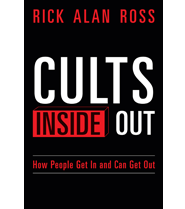A Fever in the Heartland: how the KKK gripped the American midwest in the 20s
Published By admin

The scene is distinctly American: a Fourth of July celebration amid stalks of corn and creekside parks; men, women and children gathered for a parade accentuated with a painted prop plane, many in conical white hoods. Kokomo, Indiana, was a typical midwestern town in the summer of 1923, when it hosted upwards of 100,000 Klansmen for a “monster” Independence Day rally. Half of its 30,000 residents belonged to the most famous and American of hate groups, including its mayor, prosecutor, its police force and school board.
That was in line with many other Indiana towns and cities in the early 1920s, when the Klan, as the author Timothy Egan recounts in a startling new book, was brazenly resurgent and mainstream across the country. Membership was somewhere between 2 and 5 million nationwide, and was disproportionately middle-class – doctors, lawyers, teachers, many, many policemen. There were Women of the Klan leagues and Ku Klux Kiddies groups. As Egan notes in A Fever in the Heartland: The Ku Klux Klan’s Plot to Take Over America, and the Woman Who Stopped Them, the Klan had, by the early 1920s, 15 US senators under their influence, as well as 75 congressmen, several governors and the mayor of Anaheim, California. The order’s national paper, the Imperial Night-Hawk, had a larger circulation than the New York Times.
“It’s a history that’s been just sort of forgotten,” Egan told the Guardian. “You think of the Klan, you think of these toothless groups in the 60s or you think of these ex-Confederates. And the 20s part of it, which was the real peak of their power, is just completely overlooked.”
No state had a higher rate of participation at the height of the Klan’s powers in the 1920s than Indiana. By the time of the Kokomo rally in 1923, roughly one in three white males in Indiana had sworn an oath to violently uphold white supremacy – a fact surprising to many white people from the midwest, which has underplayed its history of mainstreaming the Klan in the 1920s. And no person in Indiana held more power than DC Stephenson, the group’s Grand Dragon, a conman who presided over the Kokomo celebration in that prop plane.
Content retrieved from: https://www.theguardian.com/books/2023/apr/11/kkk-book-american-midwest-fever-in-the-heartland-timothy-egan.






